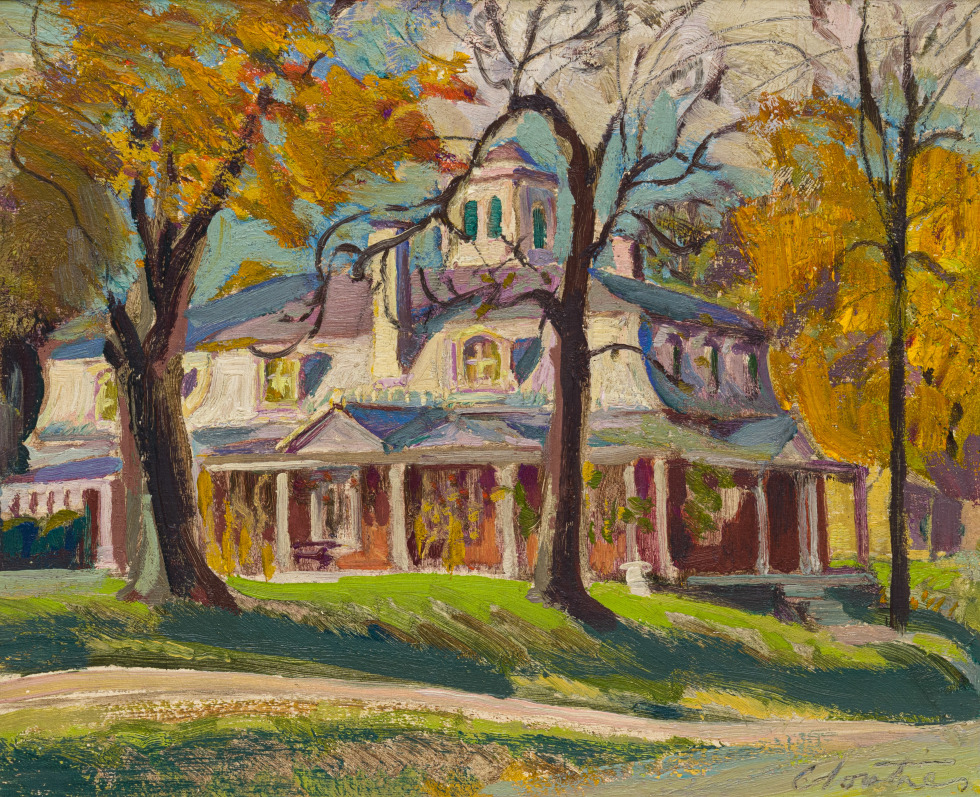Albert Cloutier
At his best, Albert Cloutier was a significant contributor to the Canadian landscape tradition in the art of Quebec, one shared by A.Y Jackson , Albert Robinson, Randolph Hewton, Robert Pilot and others to follow (eg. Lorne Bouchard, Franklin Arbuckle, Henry Simpkins) when sketching in the Laurentian winter. Walter Klinkhoff was proud to represent Albert Cloutier at Walter Klinkhoff Gallery.
Prior to WWll and afterwards, he earned a living as a graphic designer, an illustrator and an accomplished mural painter. From 1955 he was a lecturer at the École des Beaux-Arts in Montreal. Between 1940 and 1944, he was the government supervisor for the war poster production programme, and in 1941, he held the role of Art Director for the Wartime Information Board. He enlisted in the Royal Canadian Air Force in March 1944, becoming the official war artist of the RCAF, and the only Francophone war artist for Canada. “Flight Lieutenant Cloutier” sketched and painted the life at various detachments of the RCAF throughout Eastern Air Command. See: http://www.rcaf434squadron.com/xotic-angel/
Cloutier’s experiences and achievements are both considerable and impressive. In the spring of 1935, Cloutier was sketching with A Y Jackson around St. Fabien on the South shore of the St Lawrence, near the Rimouski region of Quebec. He continued infrequently to sketch the Quebec landscape with both Jackson and Edwin Holgate. For the Canadian Pavilion at the New York World’s Fair in 1939, Cloutier collaborated with A.Y. Jackson on a large mural, and also collaborated with other artists in decorative and extensive mural work for the pavilion.
Albert Cloutier’s professional associations included the Federation of Canadian Artists in 1941, the Canadian Society of Painters in Water Colour in 1948, an associate of the Royal Canadian Academy of Arts in 1951 , and a member of the Academy in 1956. He was an associate of the Arts Club, Montreal in 1951, and became president of the Club from 1957 to 1959. He joined the Canadian Society of Graphic Art (c.1 952) as a member, and became president of the Art Directors' Club of Montreal in 1953.






